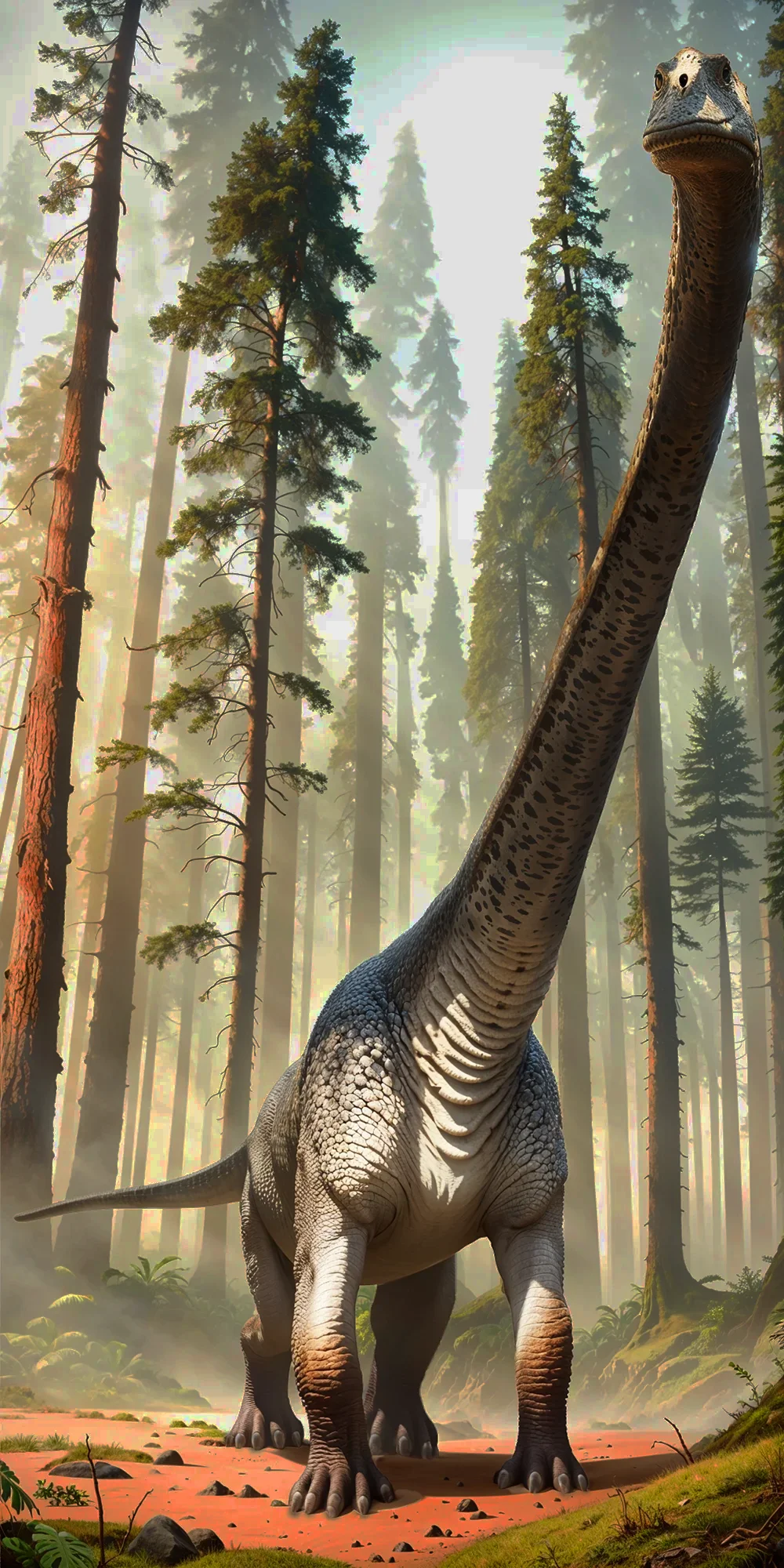The Dreadnoughtus
The Dreadnoughtus, a massive herbivorous dinosaur, lived during the Late Cretaceous period and is known for its enormous size, with estimates suggesting it could reach up to 85 feet in length and weigh around 65 tons. This colossal creature had a long neck, small head, and a strong, sturdy body supported by four legs ending in broad feet. It likely had a slow metabolism due to its gigantic size, needing to consume vast amounts of vegetation to sustain itself.

| Dreadnoughtus | |
|---|---|
| Size | 85 feet (26 meters) in length |
| Weight | 65 tons (59,000 kilograms) |
| Speed | 19-25 mph (30-40 km/h) |
| Key Strength | Powerful tail for defense |
| Biggest Weakness | Limited range of motion |
| Scientific Name | Dreadnoughtus schrani |
| Family | Lognkosauria |
| Habitat | Terrestrial |
| Geography | South America |
| Diet | Herbivorous, high-fiber vegetation |
| Lifespan | 60 years - 70 years |

The Dreadnoughtus
The Dreadnoughtus, a massive herbivorous dinosaur, lived during the Late Cretaceous period and is known for its enormous size, with estimates suggesting it could reach up to 85 feet in length and weigh around 65 tons. This colossal creature had a long neck, small head, and a strong, sturdy body supported by four legs ending in broad feet. It likely had a slow metabolism due to its gigantic size, needing to consume vast amounts of vegetation to sustain itself.
Fun Fact: Dreadnoughtus is believed to have been one of the largest land animals to have ever existed, surpassing even the size of other famous dinosaurs like the Tyrannosaurus Rex and the Brachiosaurus.
| Dreadnoughtus | |
|---|---|
| Size | 85 feet (26 meters) in length |
| Weight | 65 tons (59,000 kilograms) |
| Speed | 19-25 mph (30-40 km/h) |
| Key Strength | Powerful tail for defense |
| Biggest Weakness | Limited range of motion |
| Scientific Name | Dreadnoughtus schrani |
| Family | Lognkosauria |
| Habitat | Terrestrial |
| Geography | South America |
| Diet | Herbivorous, high-fiber vegetation |
| Lifespan | 60 years - 70 years |
Dreadnoughtus Matchups
We use AI to simulate matchups between the Dreadnoughtus and other animals. Our simulation considers size, strength, and natural predatory behaviors to determine the most likely outcome.
Dreadnoughtus: Diet, Predators, Aggression, and Defensive Behaviors
What did Dreadnoughtus eat?
Dreadnoughtus were herbivores, meaning they primarily consumed plants. They had a specialized diet of ferns, conifers, and other vegetation that they could find in their environment.
Did Dreadnoughtus have any predators?
Due to their massive size and powerful build, Dreadnoughtus did not have any natural predators in their ecosystem. Their sheer size made them difficult targets for any would-be predators.
Were Dreadnoughtus aggressive?
Dreadnoughtus were generally not aggressive animals. They were known for their peaceful nature and spent most of their time grazing and foraging for food. They did not seek out conflicts with other animals.
Did Dreadnoughtus fight?
Dreadnoughtus were not known to engage in fights with other creatures. Their large size and impressive strength served as a deterrent for potential challengers, and they would typically avoid confrontation whenever possible.
How did Dreadnoughtus defend themselves?
If threatened, Dreadnoughtus could resort to using their massive size and strength as a form of defense. They could also use their long tail as a whip-like weapon to ward off potential threats.
What was the biggest weakness of Dreadnoughtus in a fight?
Despite their formidable size and strength, Dreadnoughtus had limited agility compared to smaller, more nimble predators. Their sheer bulk made them slow-moving and vulnerable to quick and agile attackers who could outmaneuver them in a fight.
Fun Fact: Despite its massive size, Dreadnoughtus was thought to have been a relatively young adult when it died, as its bones exhibited characteristics of rapid growth typically seen in younger individuals.
Fun Fact: The name "Dreadnoughtus" was chosen to reflect the dinosaur's impressive size and power, with "Dreadnoughtus" meaning "fears nothing" in Latin, highlighting its dominance in the ancient ecosystem it inhabited.










